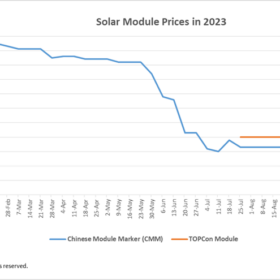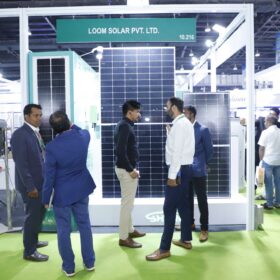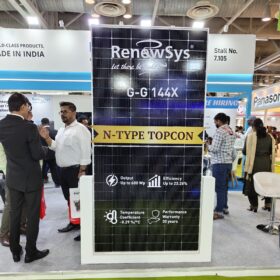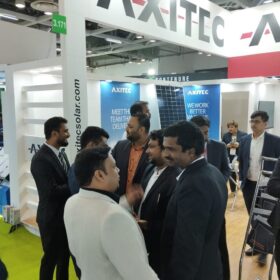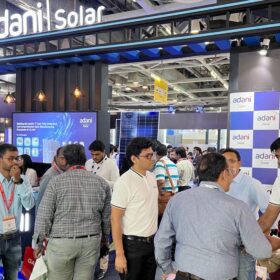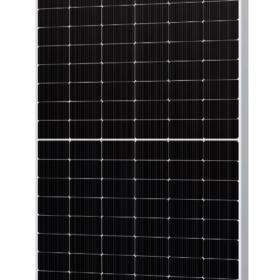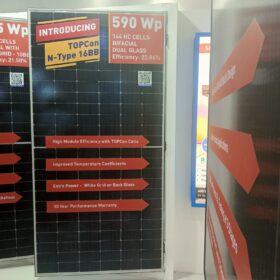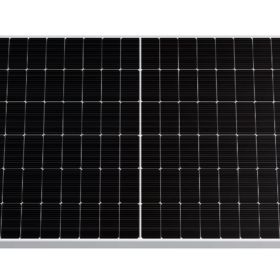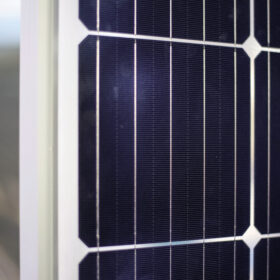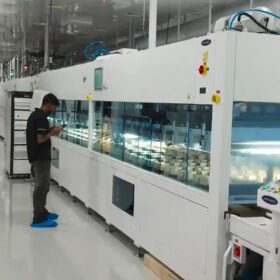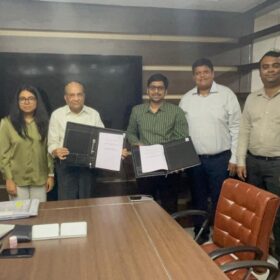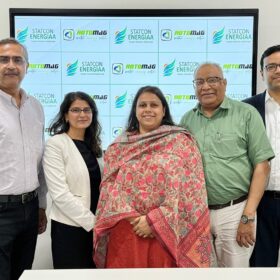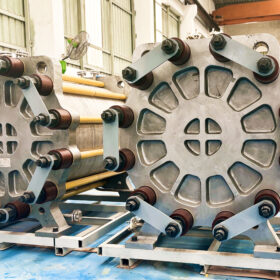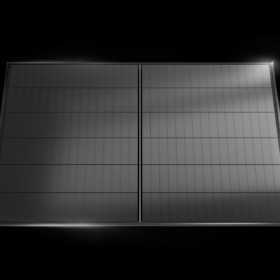Solar module prices dive to record low
In a new weekly update for pv magazine, OPIS, a Dow Jones company, offers bite-sized analysis on solar PV module supply and price trends.
Loom Solar unveils 16BB bifacial TOPCon module
India’s Loom Solar has launched a bifacial TOPCon solar module that provides peak power output of 575 Wp with front-side conversion efficiency of up to 22.3%. Rear-side provides an additional gain of up to 25%, leading to 700 Wp output.
RenewSys unveils TOPCon solar module series
Mumbai-headquartered RenewSys has launched bifacial solar modules based on TOPCon technology. The modules are available in peak power outputs of up to 650 W with front-side efficiencies of up to 23.3%
Axitec to set up 600 MW of pilot solar module lines in India
Tanmoy Duari, chief executive officer at Axitec Energy India, told pv magazine that the planned capacity, 300 MW in Gujarat and another 300 MW in Tamil Nadu, will produce n-type TOPCon solar modules. Production will start in the first quarter of 2024.
TOPCon dominates REI 2023 show
The Renewable Energy India (REI) Expo 2023 showcased TOPCon solar modules from almost all leading PV manufacturers in India, including Adani, Premier Energies, Waaree, and more.
Gautam Solar launches n-type TOPCon solar modules in India
Gautam Solar has introduced its n-type TOPCon solar modules in power ratings of 565 Wp to 580 Wp and a maximum efficiency of 22.45%.
Trina Solar’s latest n-type modules receive BIS certification
Trina Solar announced that its latest n-type solar modules, Vertex N NEG21C.20 and Vertex N NEG19RC.20 have received the Bureau of Indian Standards (BIS) certification. These modules are being exhibited at the Renewable Energy India (REI) tradeshow in Greater Noida.
REI 2023: Jakson unveils bifacial solar panels based on TOPCon technology
Indian manufacturer Jakson has exhibited its 590 Wp TOPCon bifacial solar panels with a power conversion efficiency of 22.86% at Renewable Energy India Expo 2023.
Gautam Solar to expand PV module capacity to 2 GW
Gautam Solar will invest INR 150 crore to double its PV module production capacity to 2 GW per year.
P-type solar products may be phased out by 2026 as n-type tech ‘rapidly’ expands
The rise of cost-effective TOPCon cell technology last year led to a ‘surge’ in production demand for solar n-type cell technology, with leading industry analysts TrendForce prophesying PERC cell capacities ‘may’ be phased out in two to three years. The company’s experts, however, warn that oversupply for p-type cells and modules may increase the price gap between n-type and p-type products in the upcoming months.
